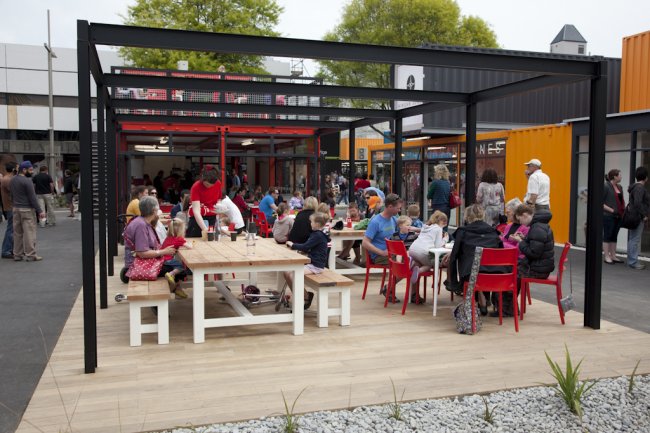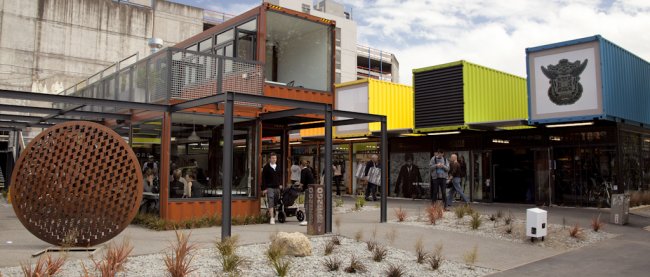How many of us have experienced real devastation in our lives? I mean when the rug is pulled from under you, your knees buckle and the world as you know it changes forever.
And then, it doesn’t end.
The pain of that experience lasts not days, or months, but years? In this corner of the world, the people of Christchurch know deep down in their bones what this feels like. They are ready for it to be over.
You probably know that two major earthquakes rocked their city nearly three years ago. The first, which hit in September 2010, was quite a shock. At magnitude 7.1, it did serious damage. The second temblor was milder but shallower: a magnitude 6.3. It hit in February 2011 and was felt all the way up to the North Island. This time, the quake was deadly: 185 people were killed when buildings crumbled, caught fire, and the ground shook until it literally turned to liquid. About 400,000 tons of silt flowed into homes and gardens and roads where, in some places, it still sits.
Survivors have had to live not just with the trauma, and constant reminders of the devastation, but also with the continuing onslaught of thousands of aftershocks, which are only just now dying down.
Despite all of this, many Cantabrians (those who live in the Canterbury region where the swarm of earthquakes hit) remain. They have chosen not leave the area, or simply can’t afford to consider the option. Some have homes whose mortgages they are still paying – even though the houses are so damaged, they can no longer live in them. Others have had to stay in homes that still need to be fixed, or may finally be declared uninhabitable. Years of waiting for…and fighting with…their insurance companies or the government to make the call.
Imagine facing a third winter in a home that can’t hold heat. It gets very cold down south – the kind of cold that, if you can’t escape, can make you physically ill. It can also fan the fires of resentment.
Even for those lucky to feel safe and warm inside, this is their third year with no city center. Though now cleared of devastation, it looks gap-toothed, fenced and forbidding. Their community feels hollow at the heart.
Imagine how all this impacts children. Their sense of dislocation, not just from the initial trauma, but the continuing hurt, has built layer after layer of scar tissue. Some are just learning they will never again return to their neighborhood schools, as decisions are finally made to close their doors forever. But their insecurity is more fundamental than that. Kids were asking in their letters to Santa, to please make the ground stop shaking. That’s all they really wanted.
So I suppose it wasn’t entirely surprising when several of our friends discouraged us from spending any time in this historic city, even though Lonely Planet voted it one of the top ten cities to travel to in 2013.
But I felt the need to understand what is the second biggest natural disaster in this country’s history. With no frame of reference – no childhood memories or friends or extended family impacted by the devastation – it’s hard to appreciate, or connect to, the deep significance. And with the first “green shoots” of recovery just now showing, I thought it would be a historic opportunity to observe what will be the first steps to reshaping New Zealand’s oldest city.
And so, depressing though it might sound, we decided to take a tour of the roped-off city center, now referred to as the Red Zone. Our guide wasn’t all smiles, as tourists might expect. Instead, rather grim-faced, she asked if there were any locals on the bus, and warned them to prepare themselves for an emotional reaction. At least the sun was shining, something she felt may give rise to a sense of hope. On gray days, she said it was hard to believe.
Then she warned us all there was a chance that we could die. Just by venturing into this no-man’s land. That makes you stop and think. But all I could think about was that we live in Wellington, the city that was supposed to have “the next big one”. (And where, we’ve now learned, we’ve been experiencing a slow slip earthquake for months.) No one knows when or where the next catastrophe will be.
On our tour, it was plain to see where the piles of rubble have been swept clean, but there are still a few buildings burned out or caught in mid-collapse. That was what the poster child of the historic city – the Cathedral – looked like: still crumbling, sitting in wait, to learn its fate. When we visited, after nearly three years, they still hadn’t decided whether to restore or rebuild the icon.
Our hearts responded to the memorial for the dead – chairs of all shapes and sizes, each painted all white. The smallest was a baby carrier.
Rebirth.
It is critically important to remember. To learn the lessons from disaster. And equally as important to build an inspired foundation for the future.
Christchurch has been uniquely creative in this transition. Its heart is now a shopping/cafe/community space built with shipping containers. The creators named it Re:START. And right now a world famous cardboard cathedral is close to completion.
There’s been a sustained effort to keeping the pulse of Christchurch’s cultural center alive. This summer, an outdoor entertainment venue built of wooden palettes proved wildly popular – now the creators are seeking funding to keep it going. Longer term, there’s a new fundraising push by the New Zealand International Film Festival to equip the earthquake-damaged Isaac Theatre to show big-screen movies. One of the Hobbit actors, who’s based in Christchurch, is now the face of the ongoing pitch.
The government’s also committed to a land purchase with hopes of creating a new arts district, including a new home for the Christchurch Symphony Orchestra. Though its vision to make it even larger is now facing push-back. The challenge is to try to restore people’s lives to something close to normal as quickly as possible, while respecting people’s rights, but also seizing the chance to innovate, something in which Kiwis take special pride.
Ideas like creating a cultural hub, or building homes using recycled plastic bottles as insulation and the latest in green technology are being considered. Or building a new cathedral that will meet the needs of a changing religious landscape in this increasingly non-church-going nation.
It’s about adapting.
That’s been the focus of my eclectic life. And now it is for my family, after our move to New Zealand. My children are learning the pain of goodbyes is offset by the excitement of exploring a new horizon. And though the trauma of a move is like a pinprick compared to the pain of a national tragedy, there is that one theme that both share: change. Wanted or not, as Heraclitus said, it is the only constant. It is also what propels you forward in life, and if embraced, with courage and vision…what inevitably leads to our evolution.


